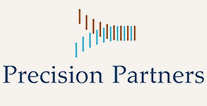In the world of Advancement Constituent Relationship Management (CRM) systems, it’s a common but dangerous misconception that data quality is solely the responsibility of the Advancement Operations Team. While this team certainly plays a key role in establishing data management standards and managing complex records, maintaining data quality is a collective effort.
Every member of the Advancement Team—across departments and functions—plays a crucial role in guaranteeing your organization’s data ecosystem remains clean, accurate, and trustworthy.
Data quality isn’t just about avoiding mistakes; it’s about ensuring every interaction with your constituents is based on reliable, up-to-date information. Here’s a deeper look at why data quality is a shared responsibility and how everyone in your organization can contribute.
The Unsung Heroes of Data Quality: Three Essential Roles
While most organizations will only formalize one role in their data quality framework, three key figures contribute to maintaining data integrity: The Spotter, The Detective, and The Inspector.
The Spotter: Your First Line of Defense
The Spotter is your organization’s eyes and ears. These individuals—often those who interact regularly with your CRM system—notice small discrepancies in the data that may go undetected by others.
For example, an outdated address, an inaccurate relationship connection, or a donor’s giving history that doesn’t quite add up, the Spotter is quick to identify problems and report them.
Spotters are instrumental in maintaining the accuracy of:
- Demographic information: Confirming constituents’ basic details are accurate and up to date.
- Relationship connections: Verifying that connections between contacts and the organization are adequately mapped.
- Giving histories: Making sure donation records reflect all gifts correctly.
- Contact details: Double-checking phone numbers, email addresses, and mailing addresses.
Paying close attention to these details, Spotters pledge that your CRM will reflect an accurate picture of your constituents, strengthening your relationships with them.
The Detective: Uncovering Patterns and Root Causes
While Spotters quickly identify discrepancies, Detectives take a more investigative approach. Detectives have a keen sense for spotting patterns or inconsistencies in data, even when the exact issue isn’t immediately clear. They might notice a series of subtle anomalies across multiple records or identify systemic problems that aren’t immediately apparent but are impacting the data quality more broadly.
Detectives provide immense value by:
- Uncovering complex data issues that could go unnoticed without a trained eye.
- Identifying systemic patterns that require organization-wide solutions.
- Contributing to long-term data quality improvement by addressing root causes rather than just symptoms.
- Preventing future inconsistencies by identifying recurring problems and recommending corrective actions.
The Detective’s ability to spot underlying issues confirms that your data quality efforts are reactive and proactive.
The Inspector: Quality Assurance Personified
The Inspector is most formalized in job descriptions and is typically responsible for data quality verification. These individuals often work in areas such as gift operations, where the accuracy of high-value data is critical. They are the last line of defense, thoroughly checking and ensuring data meets the necessary standards before entering or processing.
Inspectors focus on:
- Recording high-dollar gifts accurately warrants that no important transaction is overlooked or improperly documented.
- Processing complex transactions precisely, verifying that every gift is tracked and acknowledged correctly.
- Ensuring documentation completeness, confirming all relevant information is captured and compliant with regulations.
- Meeting compliance requirements and identifying that your data meets legal and organizational standards.
While this role is critical for high-stakes data accuracy, the Inspector’s work relies on the support of Spotters and Detectives to identify and resolve potential issues early on.
A Call to Action: Embrace Your Role in Data Quality
The beauty of this approach is that while only the Inspector role is typically formalized, every member of the Advancement Team has a part in maintaining data quality. Whether you’re in Major Gifts, Alumni Relations, Annual Giving, or another area of Advancement, you have the opportunity–and the responsibility–to verify the data you work with is accurate and reliable.
Ask yourself:
- When was the last time you spotted an outdated contact detail and reported it?
- Have you noticed patterns of inconsistencies in your data that need further investigation?
- Do you take the extra time to verify the accuracy of your data before passing it along?
Data quality isn’t just about keeping your records clean—it’s about confirming engagement with constituents based on the most accurate and up-to-date information. Otherwise, you risk damaging the relationships you’ve worked so hard to build.
So, the next time you’re working within your CRM system, take a moment to reflect: Which of these roles can you take on today? Remember, data quality is not the responsibility of one department or individual—it’s everyone’s responsibility.
